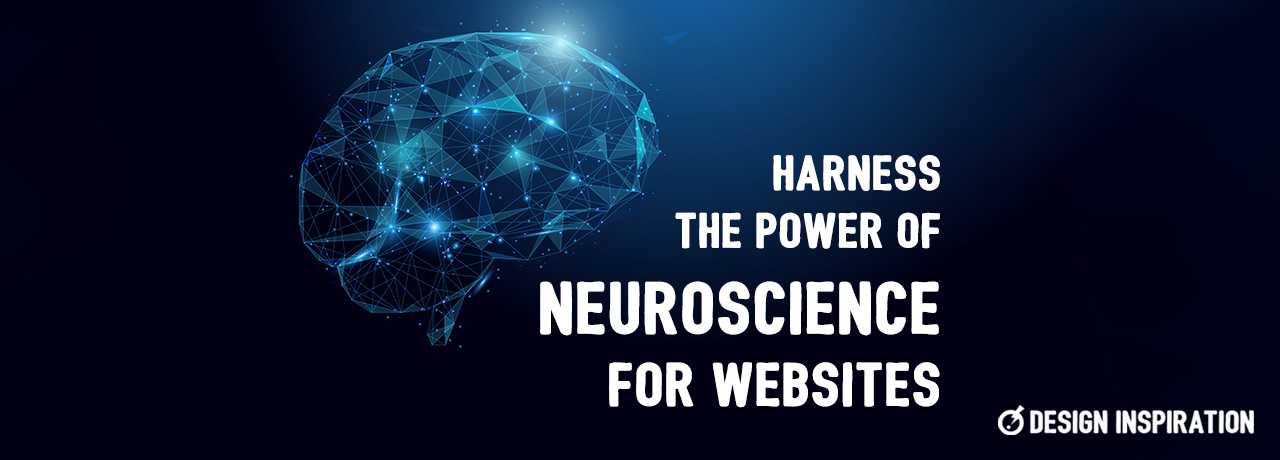
Harness the Power of Neuroscience for Websites
Web design has come a long way over the years since we began in 1993. One area of research that is becoming increasingly important is the use of neuroscience. Neuroscience can help us understand how users interact with websites and how we can design websites in ways that are ever more effective.
Visual Processing
One of the key areas where neuroscience is applied in web design is in understanding how users process visual information. The human brain is wired to process visual information quickly and efficiently.
Research has shown that the brain can process visual information in as little as 13 milliseconds. By contrast, an average adult reads at a rate of about 200 to 300 words per minute, which equates to roughly 3 to 5 words per second.
Additionally, the brain is able to process visual information in parallel, meaning it can process multiple visual stimuli simultaneously. Reading written information requires sequential processing, which means that the brain must process one word at a time before moving on to the next.
Designers can use this knowledge to create websites that are easy to navigate and understand. For example, by using strong imagery, simple layouts, and clear typography, we can quickly signpost users on their journey, helping them to find information quickly and make sense of it immediately.
Information Processing
The human brain is capable of remembering large amounts of information, but it is also easily overwhelmed. Neuroscience helps us understand how users process and remember information. Web designers can use this knowledge to design websites that are easy to navigate, with clear and concise information that is easy to remember.
For example, by using simple and consistent systems of navigation, designers can help users to quickly find the information they are looking for. By using contrasting colours, clear headings and subheadings, designers can help users to understand and remember where information is located and where new information is likely to be found.
Stimulus Response
Neuroscience teaches us how users react to different types of stimuli on a website. Certain colours or layouts may be more effective at capturing users’ attention, while others may be more likely to be overlooked. By understanding how users react to different types of stimuli, designers can create websites that are more effective at capturing users’ attention and keeping them engaged.
For example, social proofing can be a powerful stimulus. Displaying user reviews, ratings, or endorsements from trusted sources can create a sense of trust in users. This can increase the likelihood of them making a purchase, as they feel reassured that the product has been endorsed by other people like them.
Decision-Making
The human brain is wired to make decisions quickly and efficiently. As web designers, how can we use this knowledge to create more effective websites?
A technique used by the most successful websites is to prioritise the use of simple and clear calls to action. By making CTAs easy to understand and act upon, web designers can help users to quickly make decisions and take action.
So make sure you copy is written efficiently, use plain language and make links, enquiry forms and buttons so easy to identify that they don’t need any extra thought. Simple, clearly-focused copy is much more effective than complicated text full of flourish and hyperbole. Reduce the number of clicks that users are required to take before they can subscribe or buy.
It always pays to streamline, edit and sharpen all the areas of your website where users are required to act before launch.
Use Emotion to Connect via Storytelling
An understanding of neuroscience can clearly be used to understand how users experience emotion while interacting with a website. We can process emotional information almost instantly and wily web designers can use this knowledge to create websites that are more engaging and emotionally resonant.
This is why the best web designers strive to use the techniques of storytelling wherever they can. We all know that we humans are particularly responsive to stories. We love getting lost in a great book. We adore weeping in the cinema when the faithful golden retriever saves the life of the mop-haired five-year-old on screen.
Great stories generate empathic responses in us through the production of chemicals such as oxytocin in our brains. We know this because of the work conducted by Dr Paul Zak and his team of behavioural research scientists. When we are drawn into the world of a particularly compelling story, we become emotionally invested in what happens, almost as if it were happening to us. That is a potent connection enhanced by neurotransmitters. Not only do we humans enjoy stories, we are addicted to them.
Neuroscience Should Drive Website Design
By understanding how the brain processes visual, textual and emotional information, web designers can create more effective, user-friendly and visually appealing websites that resonate with users. As our knowledge of the human mind continues to improve, we can expect to see more and more applications of neuroscience in web design. It can help us to create ever more effective and engaging websites.
If you want to design websites that are more effective, find out more about how you can use neuroscience to improve your work.
Is Your Content Creative Enough?
Design Inspiration has 30 years’ experience in creating designs that help businesses reach their audience. If you want to have a no-obligation conversation about how we can help you produce creative content, get in touch with Design Inspiration using the form below:
